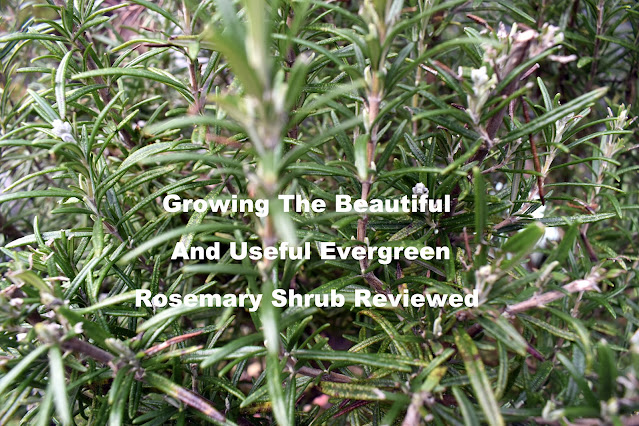Choisya or Mexican Orange Blossom is a gorgeous shrub for the garden and one I would highly recommend. It is an evergreen shrub with fragrant white star shaped flowers and lovely sunny aromatic yellow foliage.
It is related to oranges and other citrus plants and its leaves release a beautiful scent when crushed. It gained its common name Mexican Orange Blossom from its scented flowers
One of the most sought after varieties and the one we have is the Choisya Sundance. It has bright yellow leaves that add a gorgeous splash of colour to the garden shining out against darker foliage or a dark fence.
There are other varieties of Choisya some with darker or narrower leaves you may wish to consider. Regarding size they vary between about five to eight feet in height and spread, though will take pruning.
Choisya Sundance has white scented flowers borne mainly in May and June and yellow-green leaves are very aromatic. It is hard to describe the scent but it is perhaps a little like basil or orange blossom and very gorgeous. I love brushing the leaves and flowers and pruning is a joy!
Growing Conditions For Choisya or Mexican Orange Blossom
It is always important to know the native growing conditions of any plant so we can try to give it similar conditions in our own gardens. Choisya or Mexican Orange Blossom is native to North America and Mexico where it grows in sunny locations in well drained soil.
So it is a wonderful shrub to have in any sunny border. This is not a shrub that will thrive in deep shade, it must have sunshine for at least a significant part of the day, though will cope with light shade.
It does best in a sheltered position so near a wall or fence or in the company of other shrubs or in a garden with a good hedge or shrubs all around.
As an evergreen flowering shrub it has beautiful colourful yellow foliage all year round and can be planted in the garden, on patios in a large pot or planted as a stand alone specimen shrub. It pairs very well with spring flowering bulbs like daffodils and tulips and early perennials.
Choisya or Mexican Orange Blossom prefers a south facing location in order to get as much sunshine as possible all day. So for most people a south facing position in the garden is ideal.
The exception to this is if you live somewhere with exceptionally hot summers in which case a west facing location may be better as that gives the plant respite in part of the day from hot burning sun which may scorch its leaves. We certainly do not live in an exceptionally hot climate but I did notice last year during our prolonged heatwave that some leaves did turn brown but I simply pruned them off in August and the plant recovered.
Soil Conditions For Choisya
Choisya thrives in well drained soil, that is rich in organic matter. It dislikes sitting in wet or damp soil so drainage is very important. It can tolerate a wide range of soil types from clay to sandy soil but it does prefer slightly acidic to neutral soil. It may not thrive quite so well if you have very alkaline soil in which case you would be better growing in a large pot filled with ericaceous (or acid) soil compost.
If you are unsure of your soil type you can buy an inexpensive kit to easily test your soil, which is useful to do in any case then you know your soil conditions for all future planting. One like this Soil Tester Kit is not difficult to use and can give you a decent information about your soil.
Planting Choisya or Mexican Orange Blossom Shrub
It is usually best to plant shrubs in Autumn/Fall or failing that in early Spring. When planting it is essential to incorporate lots of organic matter such as rich compost. Dig a very large planting hole about twice as wide and deep as you need in order to add all the organic matter.
Very few of us have perfect soil conditions, so this helps to improve the drainage especially on clay soil and to retain moisture if in a very light sandy soil. It is vital to water deeply after planting and to give it a good watering at least once a week until it establishes itself.
I would always plant Choisya or Mexican Orange Blossom shrub where you are going to brush against it regularly. Although many shrubs are planted at the back of the border, this one deserves to be where you can touch it and smell it every day! So you may like to plant it as a specimen shrub or at a corner or place where you walk past and can brush against it.
If you do not have a garden or if your soil is very alkaline you can also plant Choisya in a large pot or container. Perhaps choose a variety that is on the smaller side. For container planting it is best to pot and repot in Spring only. I have one in a very large pot and it is doing very well. I planted it first with crocks and good drainage in the bottom to prevent drainage holes getting blocked with soil, then added a mix of high quality ericaceous (acidic) and loam based compost.
It does require much more deep watering more often than it would if grown in the ground and I need to pay more attention to it to check if it looks stressed or having any issues.
In winter container grown plants are more vulnerable, so I wrap her in fleece and keep by a sheltered wall.
I also do keep it much smaller at around three foot so it does not outgrow the container too quickly. However, it is worth it as I wanted one in this particular location and it is very happy.
Feeding Choisya
Choisya in the ground do not generally need feeding although they do benefit from an annual mulch in Spring. In containers top dress each year in spring with fresh compost. If the shrub is not flowering or has few flowers give it a feed in Spring of potassium or sulphate of potash like Bio Nova Liquid Potassium.
Pruning Choisya or Mexican Orange Blossom Shrub
Once established Choisya needs very little care and maintenance. The main task is to do annual pruning to the desired size and to shape the plant how you like it to look.
It is a fast growing shrub and can grow to be six foot wide and tall which looks amazing if you have the room. However it can easily be pruned to keep it smaller than this as required.
The best time to prune it is when it has finished flowering usually around July to late summer. Try to get all pruning done by August as the shrub needs time to recover before winter cold sets in. I usually prune with a pair of sharp secateurs like the Wolf Bypass Secateurs though you may need Loppers for thicker branches if it is a large shrub. It is simply a matter of shortening each branch to the desired length.
Watering Needs
For the first year after planting it is very important to water your Choisya or Mexican Orange Blossom regularly. This helps to establish a strong reliable root system for the health of the plant. It is vital to not skip this step.
As it grows older it can tolerate drought better and will rarely need watering if it is planted in the ground. However, it is advisable to water deeply and thoroughly perhaps once a week if you have a long period of drought. Do remember that it hates sitting in wet so check the soil first.
This basic level of care will help promote healthy growth and enable prolific flowering.
I would always find room for this gorgeous shrub, even in a packed garden I would have to have it!
Choisya or Mexican Orange Blossom is a joy in all seasons with fresh spring growth, gorgeous white scented flowers in May and June, evergreen and scented leaves all year round and providing much needed structure in winter.
Grow it tall and wide or prune to the desired smaller height. A beautiful evergreen, scented and well behaved shrub that I would not be without in the garden.











































